
Yes, you might think the title is a mis- print, but it is not. HSR (Historic Sportscar Racing) put on their now annual Historic 24-hour race for vintage cars at Daytona International Speedway from 4-8 November. This event is run in a similar fashion to the Le Mans 24 historic in terms of process and procedure. The cars are divided into six run groups, and each group runs for one hour, four times during the 24 hours (well actually after you factor in, race stop time, grid setup and restart of next group it ends up being 42 minutes). The cars are grouped into like historical groups, and there are different classes within the groups. So, while you might not win the overall group, you can win your class within the group. HSR has their own races, in addition to the 24-hour historic, which include several sprint races (20-30 mins) and two “endurance races” of 1-hour length. Most of the HSR races are used by teams to test and setup for the 24. Although there are some who just run the HSR races and skip the 24, while others do not run all the HSR short events and focus on the 24-hour.
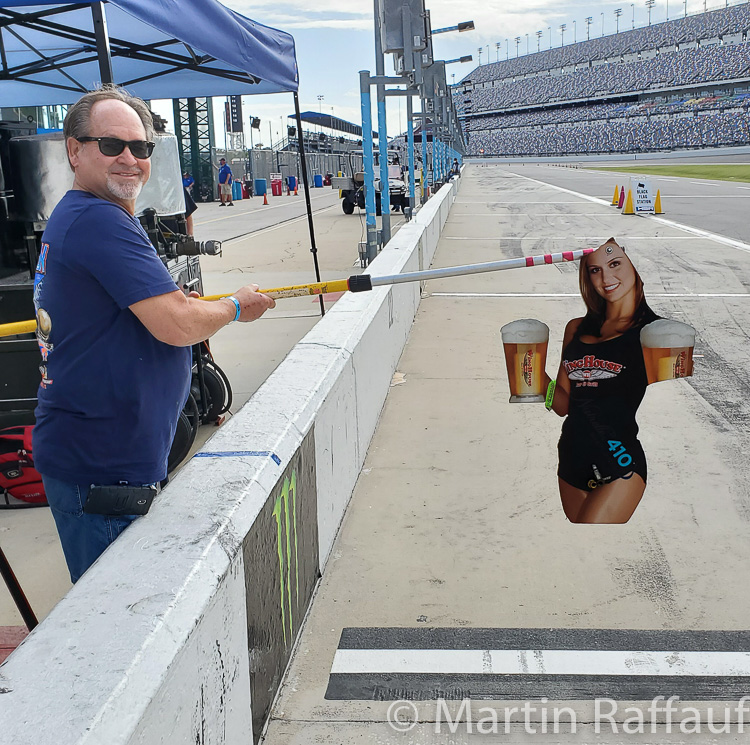
The event always runs at Daytona in early November, so the weather is usually nice, as the Florida winter is setting in, which is quite comfortable. Daytime highs are around 75-80° F and night lows in the 60°s F. However, this being 2020, you might expect something out of the ordinary, and of course we were not disappointed. Tropical storm/hurricane ETA was meandering through the Caribbean and Gulf of Mexico approaching Cuba as the event got underway. It seemed clear that the race might be affected by the weekend.
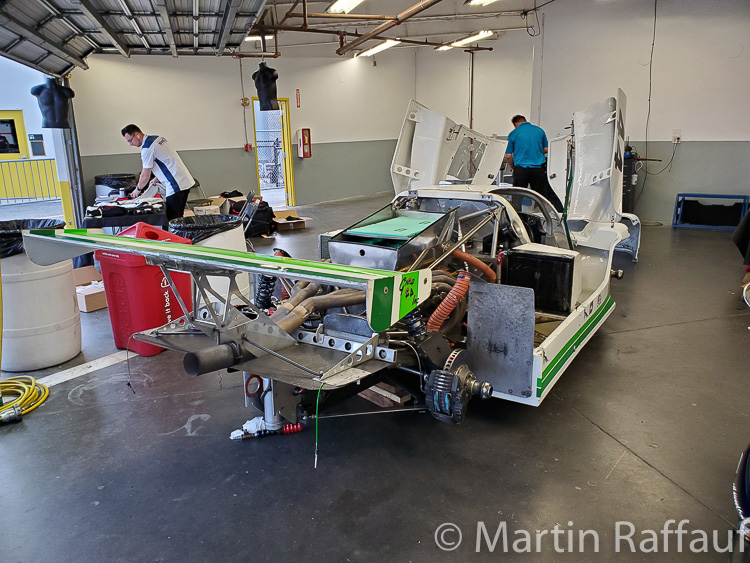
The rules for this race are somewhat different from Le Mans, or European Historic events. Whereas in Europe usually some kind of FIA Historic car papers are required to run, here in the US it is much more lax. Replica cars of various configurations (i.e., not exact replicas) are allowed. There is also a group of “catch all” that allows current day cars, and others that do not really fit in anything else. While total entries were down due to the COVID-19 pandemic, it was still a good, varied field.
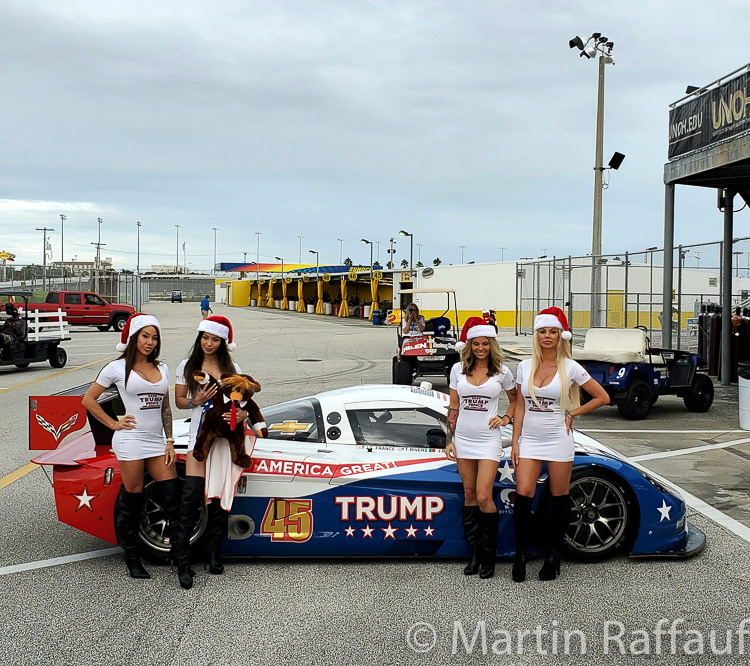
This year, as in past events, I was working with my long-time friends at Doran Racing who had entered a 2008 Ford GT Mk 7. This car ran in Group F, which consisted of various prototypes and GT cars from about 2005-2014. This was a car that was built in later years for vintage racing but was the same as the in-period cars that ran in the ALMS (American Le Mans Series) and also at Le Mans. The car was built on an original 2006 Ford chassis. Drivers were Brad Jaeger and Kody Swanson. Kody, a multi-USAC sprint car champion, was honing his road racing skills. Brad had run with Doran for many years in DP (Daytona Prototype cars), as well as Indy Lights and other series.
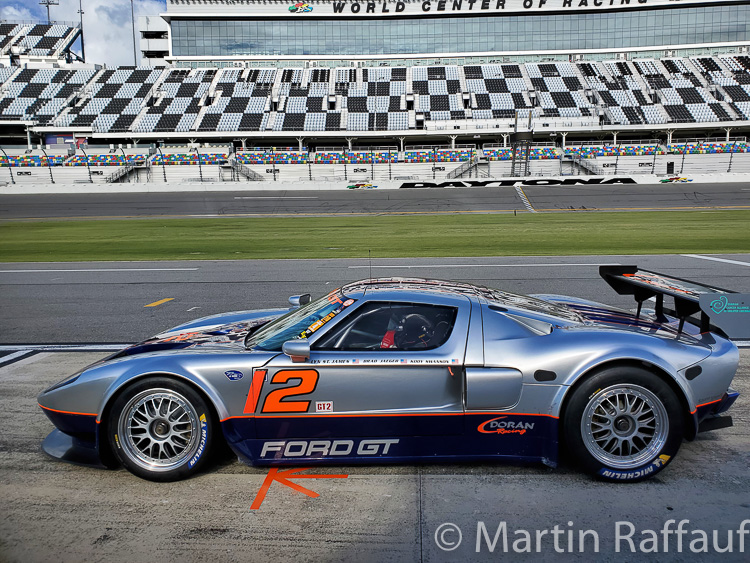
From a Porsche perspective, there were many cars. Most of them were various derivatives of Porsche Cup cars over the years. However, there were several 935 models as well as a couple of 962s.
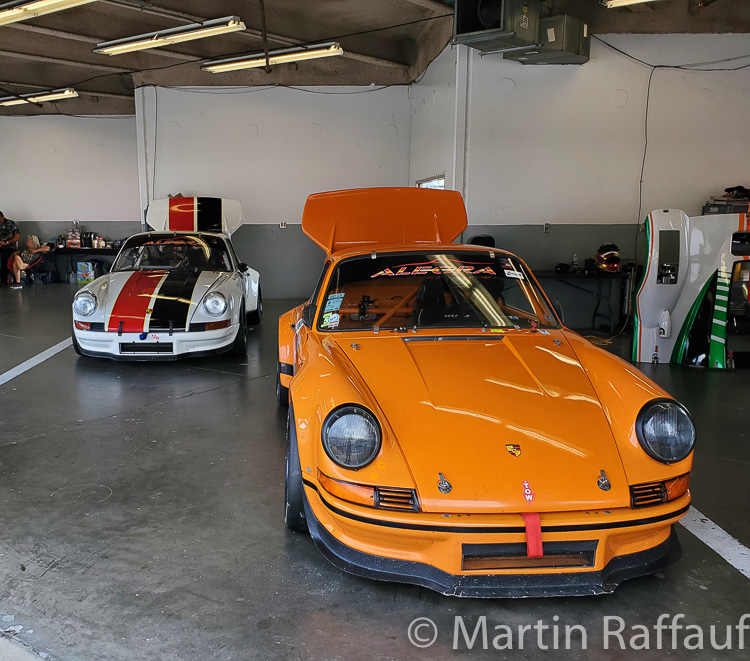
The 24- hour Race groups were as follows:
| Group A | Early FIA era 1962-1972 |
| Group B | Early IMSA era 1973-1982 |
| Group C | Late IMSA/FIA 1983-1992 |
| Group D | Early Grand Am/GT cars 1994-2003 |
| Group E | Current Prototype/GT 2000-2018 |
| Group F | Modern Era Prototype/GT |
| Group G | HSR cars deemed not eligible for Groups A-F |
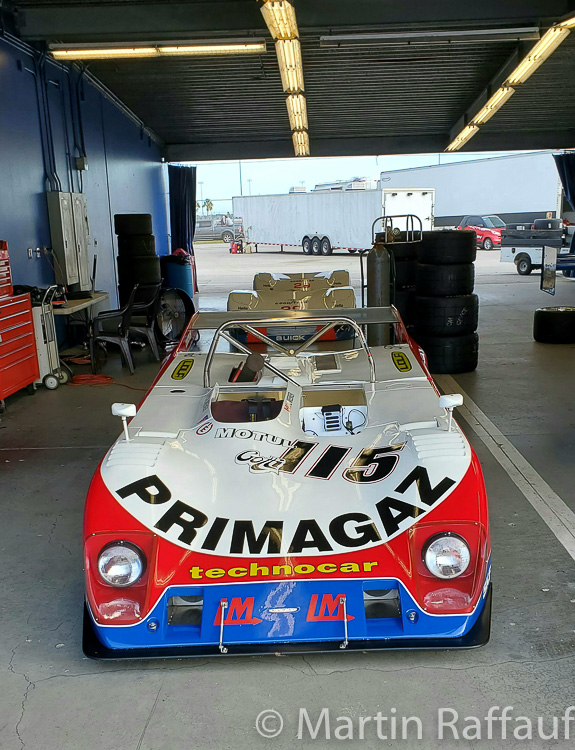
The race started at 13h00 on Sunday under clear and warm conditions. Rules for the 24 mandated a 3-minute pitstop timed from the pit in demarcation line to the pit exit demarcation line during each segment. Drivers could be changed, fuel added, or tyres changed if required. I did not see anyone change any tyres as the cars just had to run for 42 minutes in the stint. I did see several fall afoul of the pit time rule by leaving too early and getting penalised.
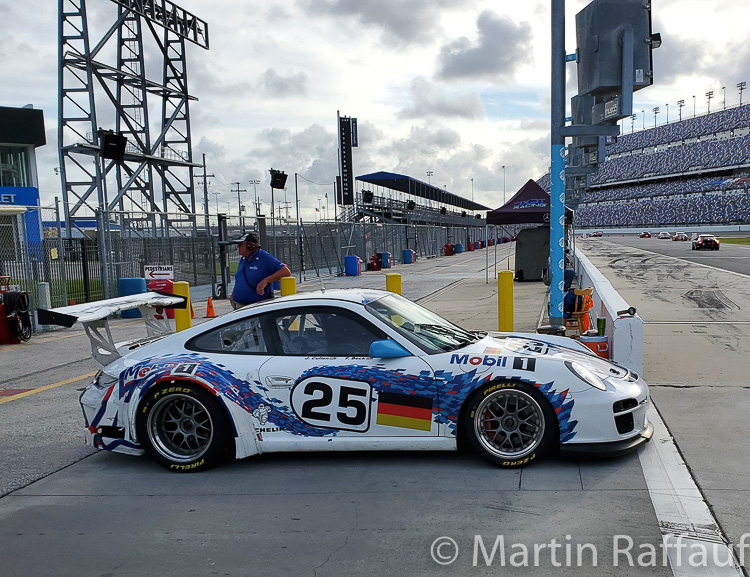

Group F overall was dominated by Generation 3 Daytona Prototypes, mainly the Action Express Coyote-Corvette of JC France, Joao Barbosa and Tim Jenurm. Much of the field was made up of various 996 and 997 Porsche cup cars. After finishing the first stint, due to the scheduling the F group then had nine hours off to prepare for the next session at 23h00. Our Ford GT completed the first two stints without difficulty, however we lost two laps at the start of the third stint due to the rain.
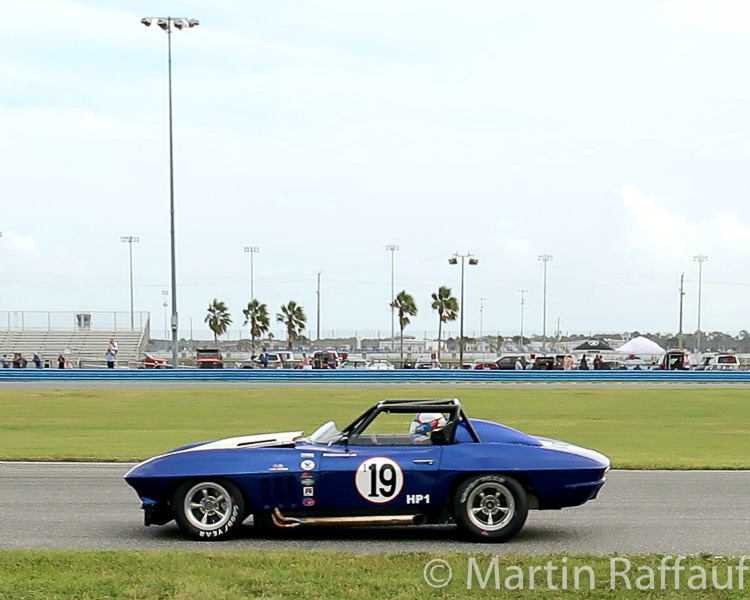
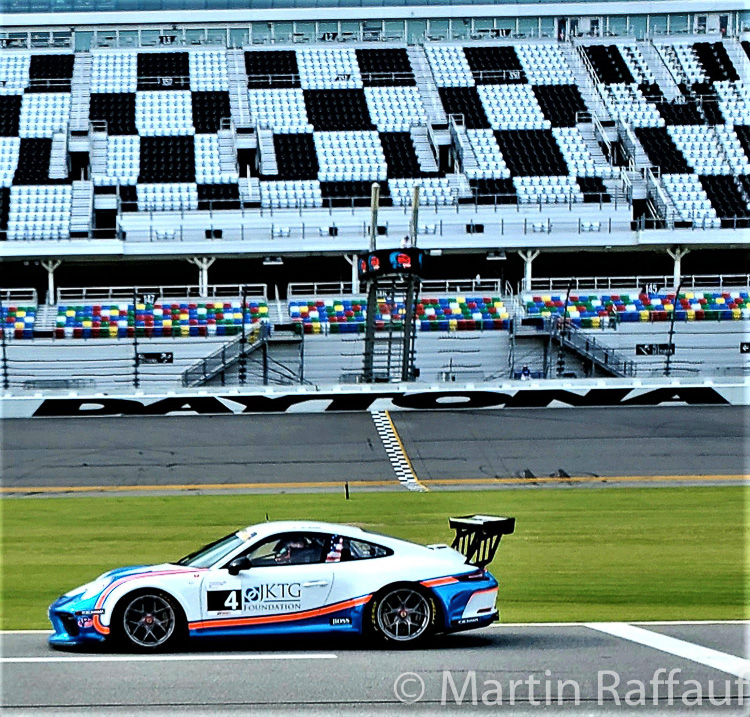
Group A was dominated by several Lola T70 Mark 3Bs, however, several other interesting cars also featured in this group. NASCAR hall of famer, Ray Evernham, was running in his 1965 Corvette and there was also a nice replica Cobra Daytona coupe, entered by Adam Lindeman, with full knock off wheels.
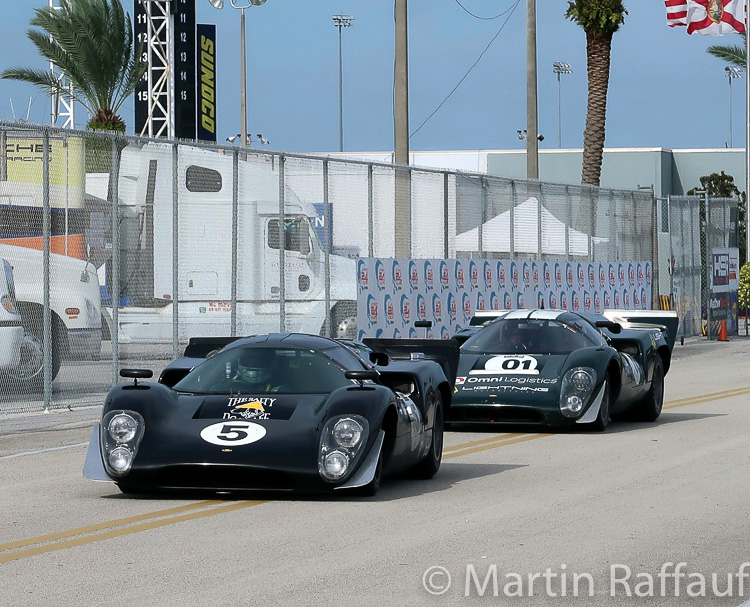
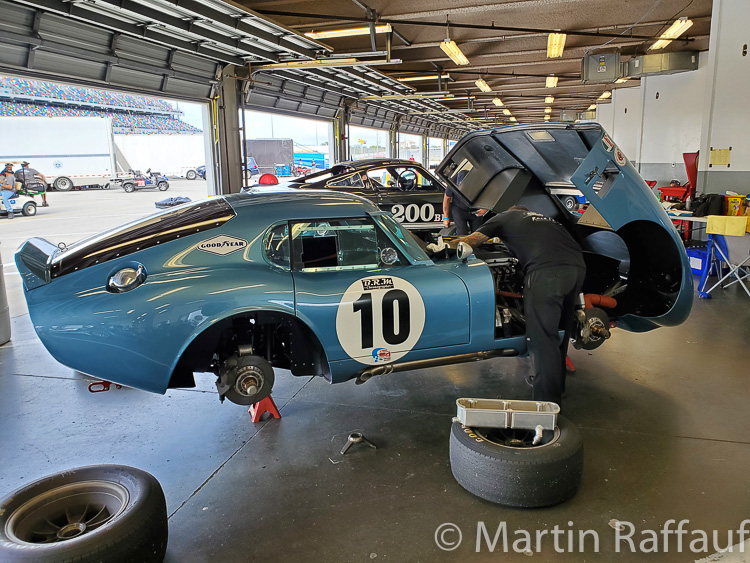
The fastest cars featured in Group E, and were led by two Prototypes, the Peugeot 908 diesel of David Porter and the 2014 Ligier JSP2 Honda of Pierce Marshall and Eric Foss. Both those cars routinely ran lap times of under 1:40, nothing else came close, with the late model Daytona Prototypes all running in the low 1:40s. It was a good battle but in the end David Porter won by 1:19 over the Ligier.
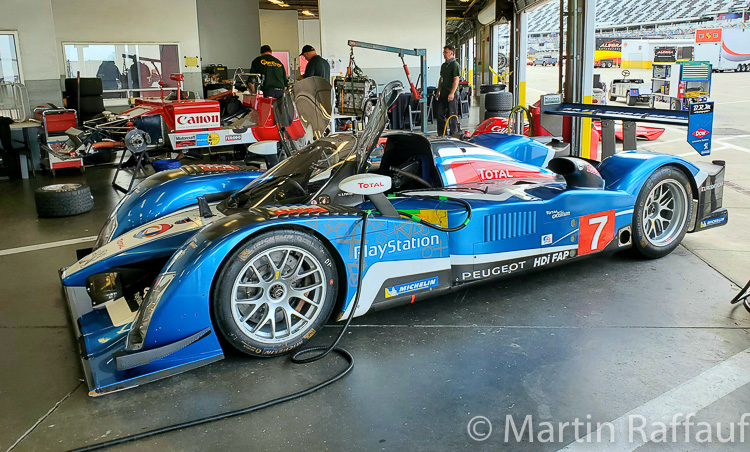
Group C featured two 962s and here 962-F01 was a Wynn’s car of John Hotchkiss racing. This car was built on a Fabcar replacement chassis in period. 962-114, an original Kremer car, was entered by Angus Russell, it being a twin turbo Group C model as compared to the Wynn’s car which was an IMSA single turbo model. The Wynn’s car led by one lap starting the final segment, but had mechanical issues and dropped out, leaving the win to Angus Russell in 962-114.
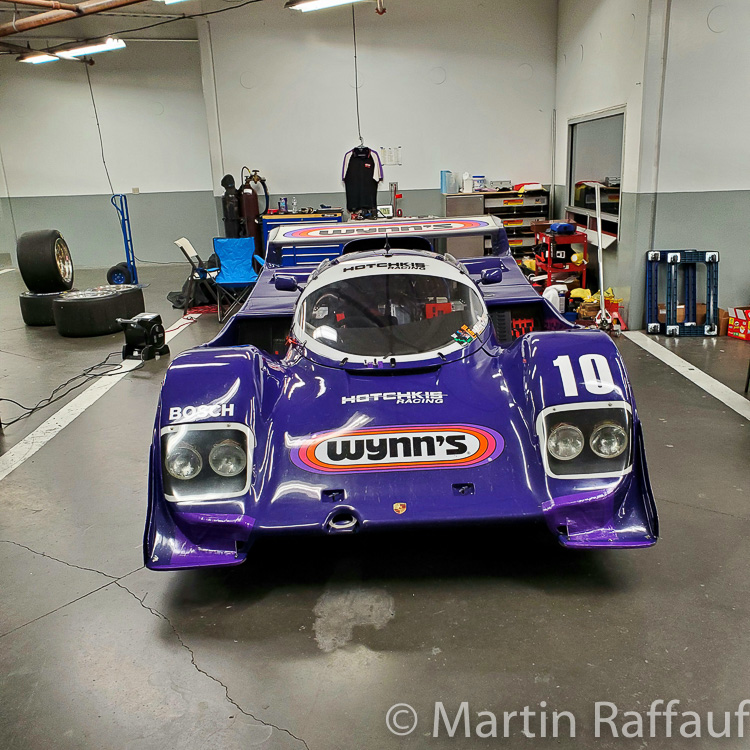
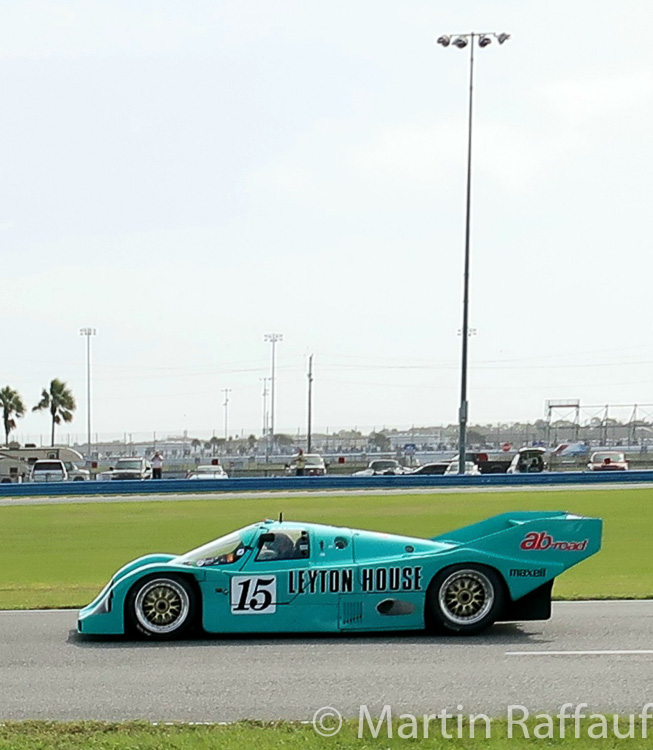
Group B had three 935s in it. Two were replica cars, the Jägermeister liveried one of Mike Smith, and another in the Blue Coral livery. The most interesting one however was the recently restored #009 0004 chassis entered by Carlos de Quesada. This car won the IMSA Daytona Finale race in 1979 driven by Bill Whittington, even though it was crashed heavily in a rainstorm which ended the race back then. The car then sat in a Fort Lauderdale Florida warehouse for 39 years until de Quesada bought it and had it restored. It was restored in the Kremer K3 specification as it had run back in ‘79. Alas, none of the 935s finished the event, all succumbing to various mechanical maladies.
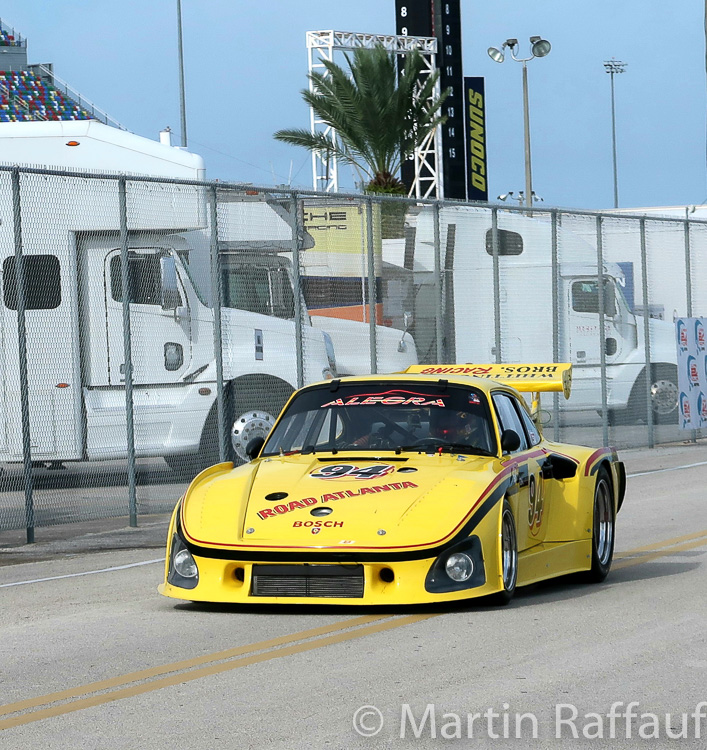
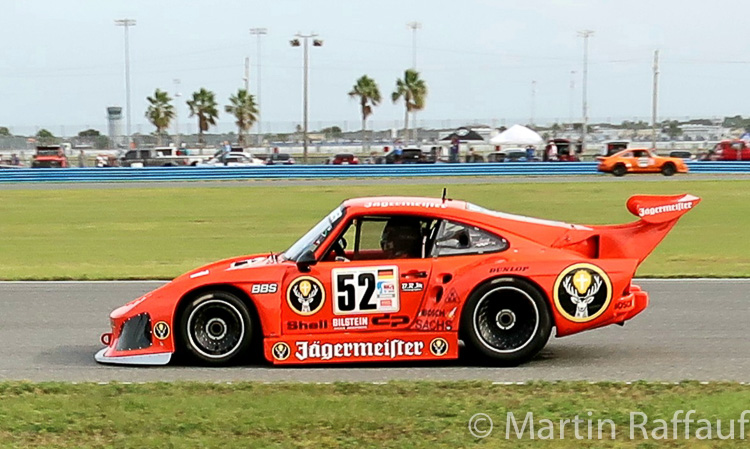
At 04h30 Sunday morning, the circuit was struck by high winds and heavy rain from the outer bands of hurricane ETA, the centre of which was near Key West, Florida, some 300 miles away. The Group E segment that was underway at the time ended under the pace car luckily without any major disaster. The track was completely flooded, the rain so heavy, that you could barely see the grandstands at Daytona. To make matters worse, the power failed in the garages and some of the garages were under water due to the high winds and heavy rain and so we were under a red flag for two hours. Due to the nature of this race, a combination of segments and total time, the red flag time does not count as each group needs to complete their four segments. After resumption at 07h00, the race was then extended by two hours to 15h00, resulting in a 26-hour event.
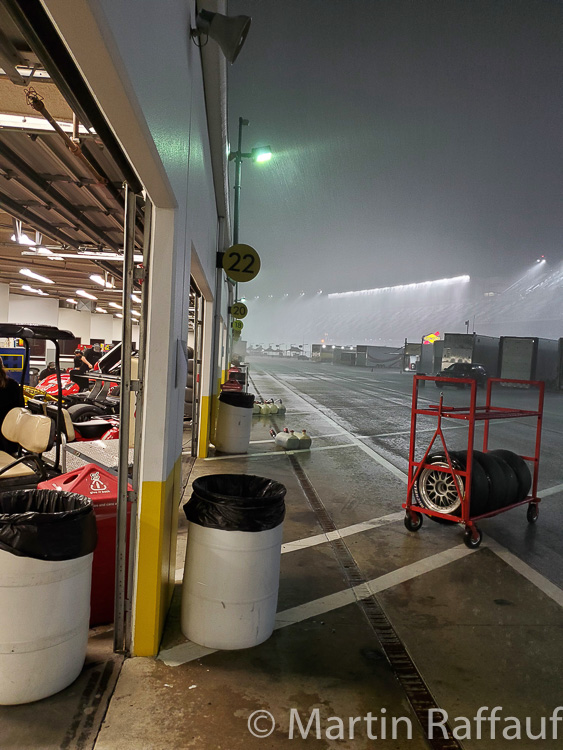
The rain held off until after the finish at 15h00, so the remaining segments were completed without any difficulties. The Ford GT that I was working on finished seventh overall in Group F, and fourth in Class GT. We were not able to make up the deficit of the laps lost with rain tyres, but we were lucky to continue at all, as we had not planned on running in the rain. The Action Express team gave us some rain tyres to use that were old Continental ones from the Daytona Prototype days, and we lost two laps getting them mounted.
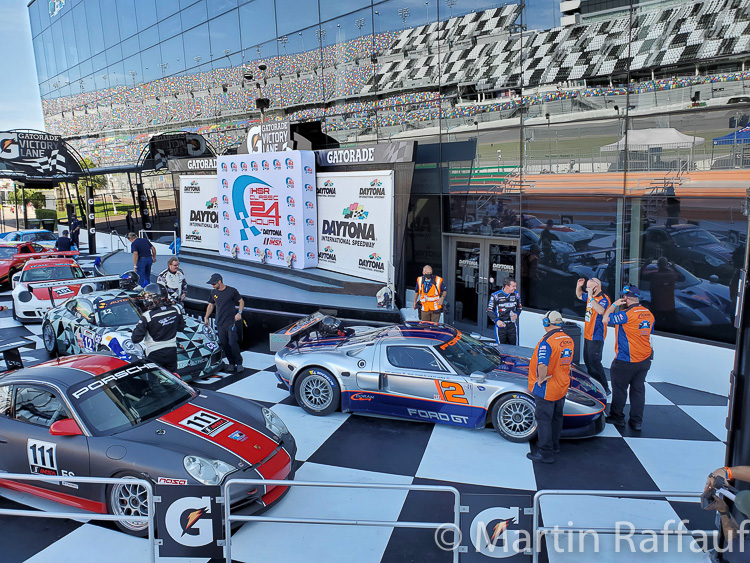
Dave Hinton and his HSR staff did an admirable job given the COVID-19 Protocols, the large disparity in car types and speeds, and of course the flooding and power outage. But, as this was the sixth year of this event, they are getting quite good at running it. We look forward to the seventh in 2021, and hope for more “normal times” in terms of weather and pandemics.
Written by: Martin Raffauf
Images by: Martin Raffauf


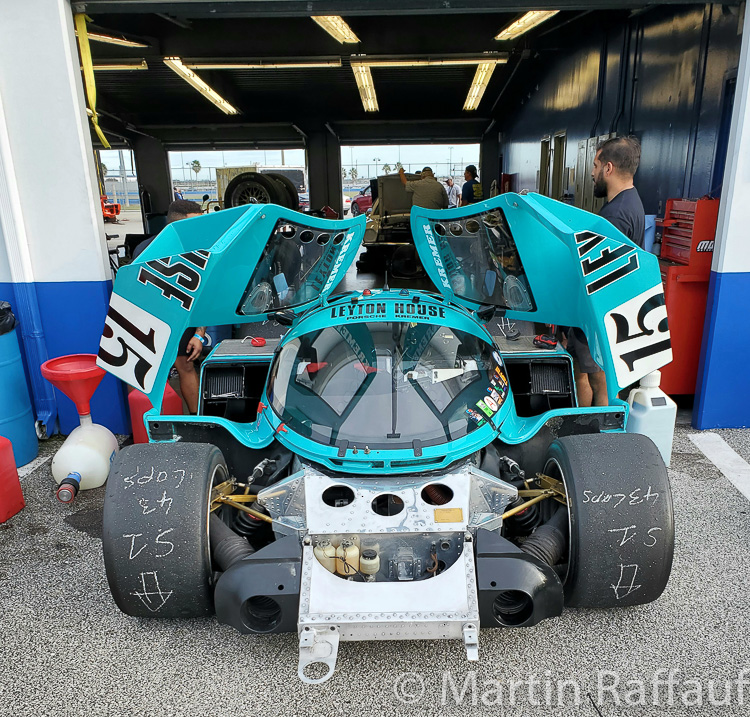
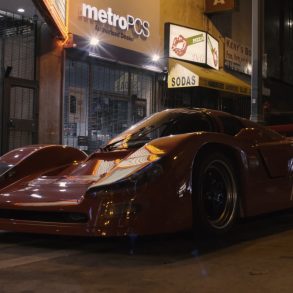
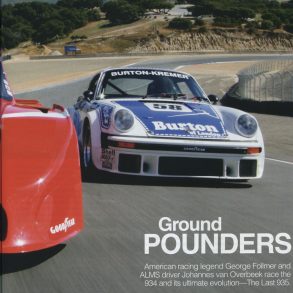

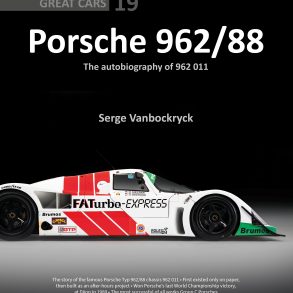
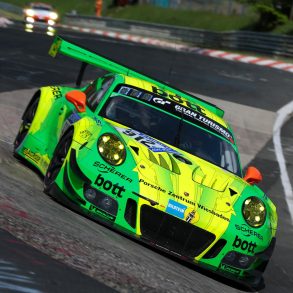
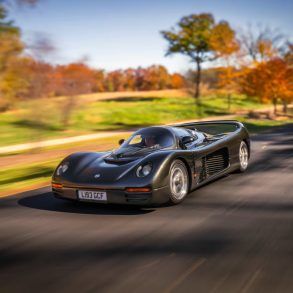
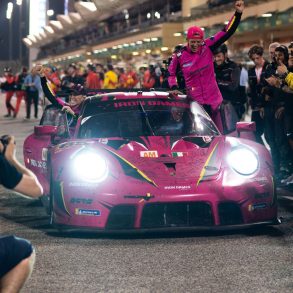
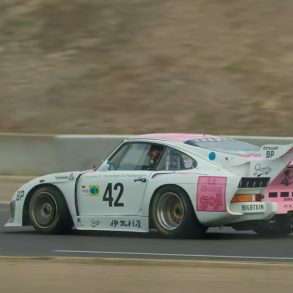
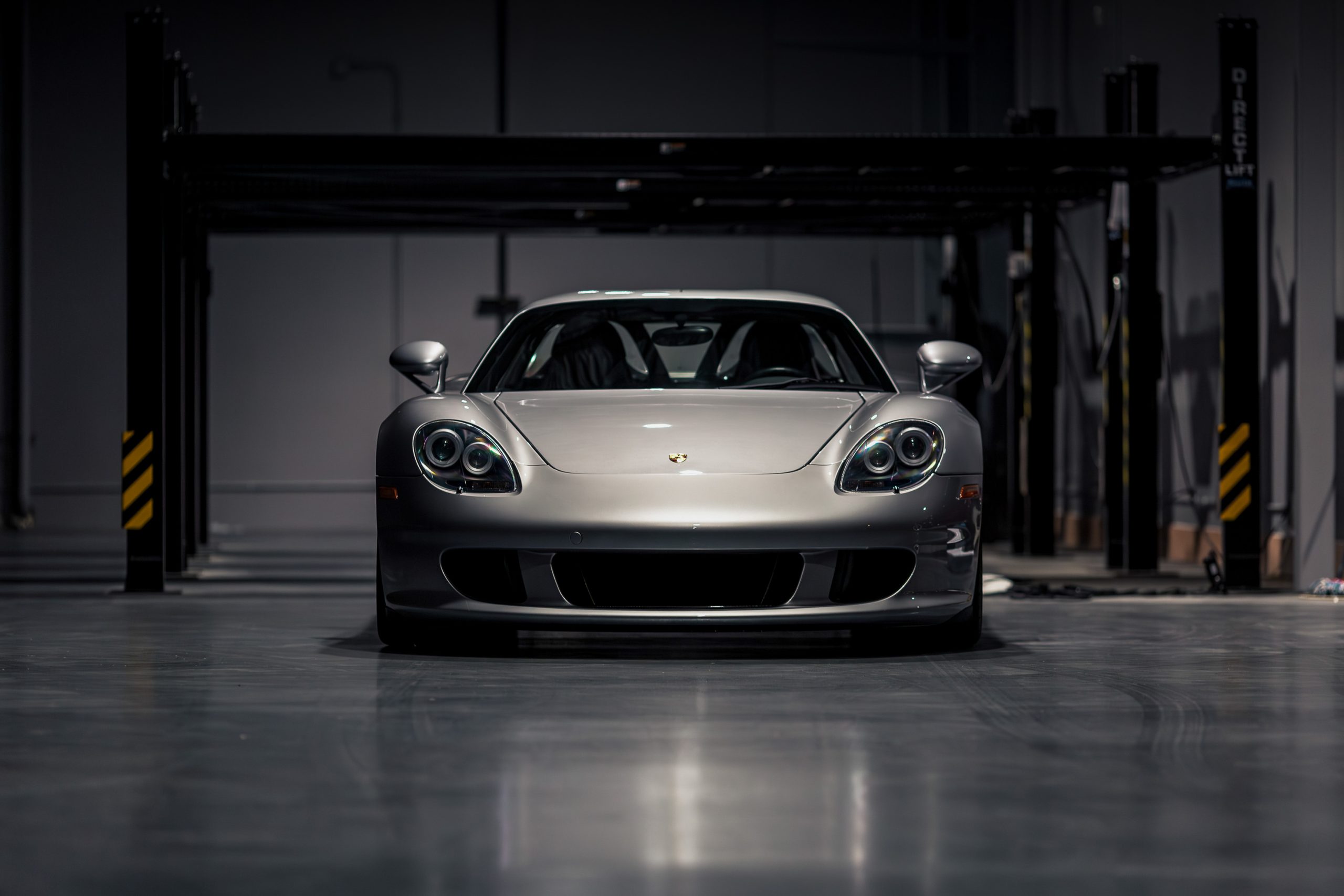
Keeper. And really good photos too, Martin. That Daytona Coupe is a serious replica – where would one start?
0
Tom, yes, it is a good event. Luckily we only had to run 4 times for “1 hour” so I had some time to get some photos. I would guess even the Replica Cobra is worth quite a bit!
0